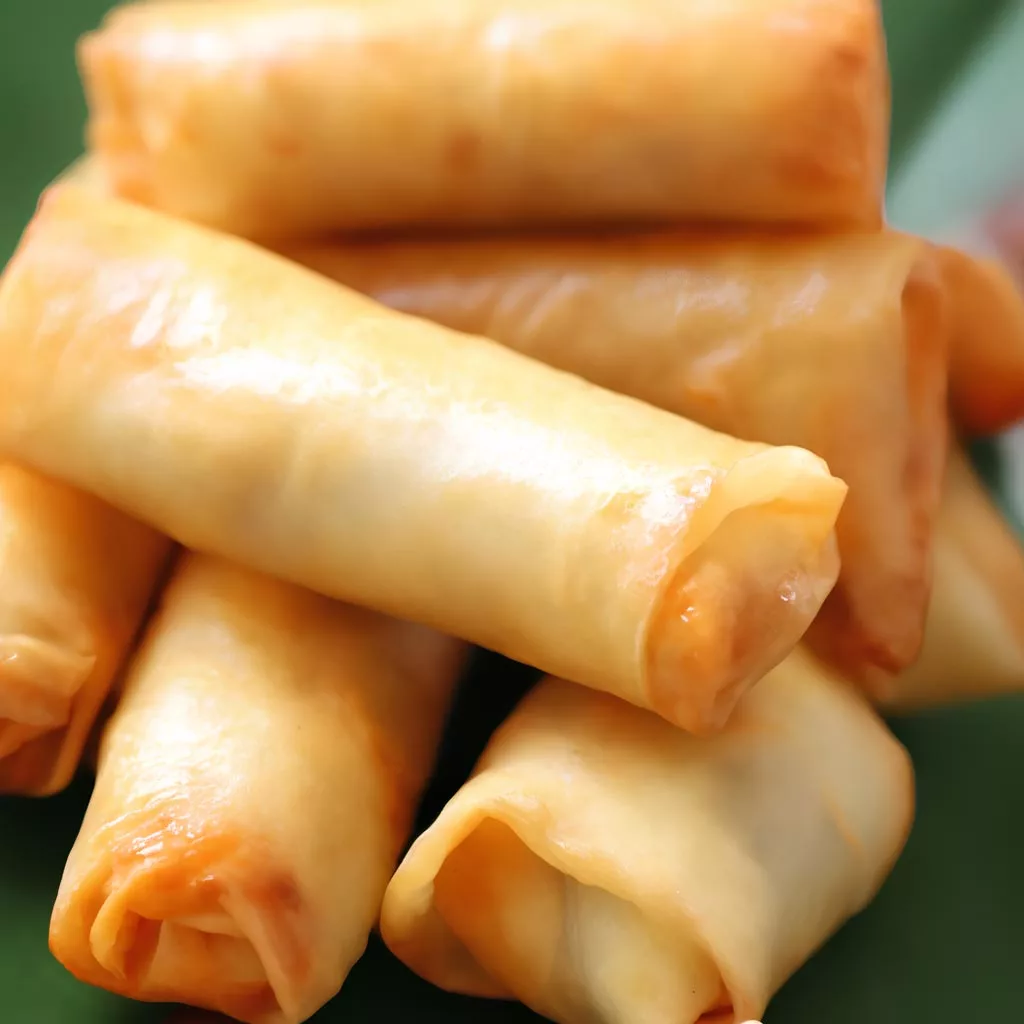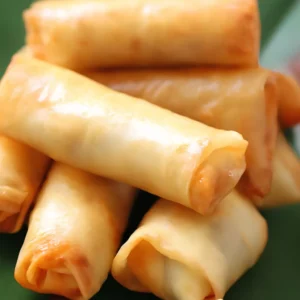
If you’re craving a crispy, flavorful snack that’s bursting with vegetables, look no further than Veg Spring Rolls. Originating from Asian cuisine, these delightful rolls offer a perfect blend of crunchy veggies wrapped in a crispy shell, making them a favorite appetizer or snack for many.
Crafting these rolls may seem daunting, but fear not! With a few simple steps and basic ingredients, you’ll be rolling like a pro in no time.
Whether you’re a beginner in the kitchen or a seasoned cook looking to try something new, this recipe promises a satisfying result.
The Veg Spring Rolls are not only delicious but also versatile. You can customize the filling to suit your taste preferences or dietary needs, making them suitable for vegetarians and vegans alike.
From the crispiness of the wrapper to the savory goodness of the vegetable filling, each bite offers a delightful explosion of flavors and textures.
Expert Tip: Ensure the filling is well-seasoned to enhance the flavor of the spring rolls.
Oil: The oil is essential for sautéing the garlic and vegetables, imparting flavor and ensuring they cook evenly.
Garlic: Minced garlic adds aromatic depth to the filling, enhancing its overall taste.
Spring Roll Wrappers: These thin, translucent wrappers are the foundation of the dish, providing a crispy exterior that encases the flavorful vegetable filling.
Carrots: Grated carrots contribute sweetness and vibrant color to the filling, balancing out the savory flavors.
Onion: Finely sliced onion adds a subtle sweetness and depth of flavor to the filling, complementing the other vegetables.
Bell Pepper: Finely sliced bell peppers add a pop of color and a hint of sweetness, enhancing the overall visual appeal and taste of the rolls.
Cabbage: Finely shredded cabbage adds crispiness and texture to the filling, creating a satisfying bite in every roll.
Salt, Black Pepper, Chilli Flakes: These seasonings add depth and complexity to the filling, providing a balanced flavor profile with a touch of heat.
Soy Sauce: Soy sauce brings a savory umami flavor to the filling, tying all the ingredients together harmoniously.
Flour: Used to make the slurry, flour acts as a binding agent to seal the edges of the spring roll wrappers.
Expert Tip: Don’t overfill the spring roll wrappers to prevent them from bursting during frying.
Expert Tip: Ensure the filling is well-seasoned to enhance the flavor of the spring rolls.
Yes, you can prepare the rolls ahead of time and store them in the refrigerator. Simply fry them when ready to serve for optimal crispiness.
Yes, you can freeze the uncooked spring rolls for future use. Place them on a baking sheet in a single layer and freeze until solid, then transfer to a freezer bag or container. When ready to cook, fry them directly from frozen, adding a few extra minutes to the cooking time.
Yes, you can bake the spring rolls in a preheated oven at 400°F (200°C) for 20-25 minutes, or until golden brown and crispy. Be sure to brush them with oil before baking for a crispy exterior.
To prevent the spring rolls from becoming soggy, ensure the filling is completely cooled before wrapping, and make sure the oil is hot enough (around 350°F or 180°C) before frying. Additionally, drain the fried spring rolls on paper towels to remove excess oil.
Absolutely! Feel free to experiment with different vegetables such as mushrooms, bean sprouts, or snow peas to create your own unique filling.
Here are some more recipes for you to enjoy! If you my recipes don’t forget to rate and leave a comment.
If you have any recipe suggestions, please do not hesitate to ask me. A great way to stay in contact with me is through Instagram, Facebook, Twitter and YouTube. Don’t forget to tag me @CookwithNabeela in your recipe photos!

Subscribe now to receive my latest recipes directly in your inbox. Stay up-to-date and never miss out!

I love to cook! I want to share with you my favourite, delicious family-friendly recipes. I want to inspire you to create fantastic food for your family every day.
Latest comments (2)
Easy recipe
I’m glad you enjoyed the recipe! If you have any questions or feedback, feel free to let me know. 🙂